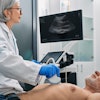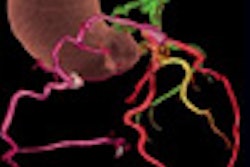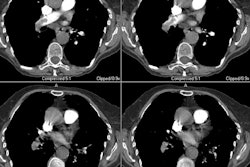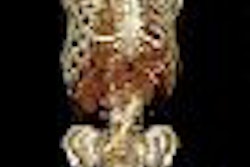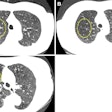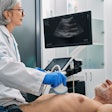Dear Cardiac Imaging Insider,
Two pillars of the argument against coronary CT angiography (CTA) -- that the radiation dose is too high and the benefits unproven -- are showing signs of structural instability.
First, prospectively gated acquisition is hammering away at CTA's radiation exposure, bringing the total dose down to 2-5 mSv in the majority of patients. And more than a few studies are showing good correlation between CTA results and adverse events, and even mortality.
In this issue's Insider Exclusive story, researchers from Harbor-UCLA's Los Angeles Biomedical Research Institute in Torrance, CA, present four studies that are representative of the emerging evidence on CTA.
First, in a retrospective study of outcomes over five years, the group found close correlation between the severity of coronary artery disease at CTA and mortality in nearly 3,000 patients. Another study with a shorter follow-up time to date, but more comprehensive tracking of patient outcomes, concluded that CTA was a "strong independent predictor of cardiac events," the UCLA-Harbor group reported. A third study confirmed that a known troublemaker at conventional angiography -- left main artery calcification -- was associated with a particularly poor prognosis when diagnosed by coronary CTA. Finally, a review of more than 8,000 patients correlated the presence of aortic calcification at CT with mortality -- giving clinicians another solid indicator of high risk. You'll find these studies, presented at the November American Heart Association (AHA) meeting in Orlando, FL, in this issue's Insider Exclusive.
At the just-concluded RSNA meeting in Chicago, researchers in France said they've imaged more than 1,000 patients with prospectively gated CTA, finding equivalent image quality with traditional retrospective gating. A team from Korea reported good results from a low-dose CT lung scan that does double duty as a calcium scoring tool. And the surprise launch of a new 320-slice scanner opened the door to 16 cm of coverage in a single rotation. Stay tuned for more from radiology's mega meeting in your Cardiac Imaging Digital Community.
In other AHA news, 64-detector CTA was found to be highly accurate for stenosis detection in the closely watched CorE trial. Contributing writer Jerry Ingram reported that multidetector-row CT (MDCT) is promising for patients with chest pain, that whole-heart CTA may trump MR angiography, and that 256-slice CT was equivalent to SPECT for stenosis detection. Could a new contrast agent help echocardiography take over stress testing?
This just in: drug-eluting stents are getting more respect with the release of a new study showing improved outcomes in routine practice. And patients, it seems, are demonstrating more optimism than their doctors about the results of angioplasty and bypass grafting.
Could at-risk populations benefit from a decreased reliance on technology and increased attention to diet and exercise in the setting of multiple holidays? We think so.

